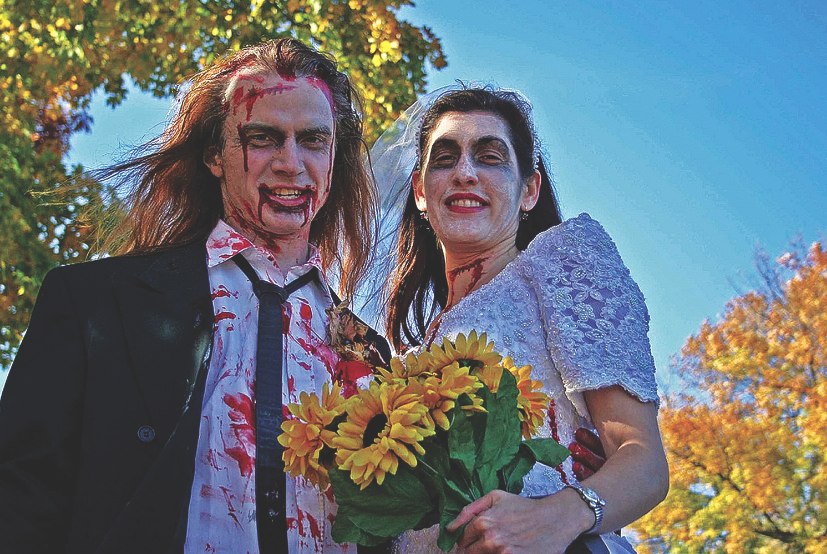Amelia Ruthven-Nelson
Recruitment Manager
Zombies? Not really my thing.

From Shaun of the Dead to Dawn of the Dead, the movies scare me, or at the very least, make me want to puke. I’m more “puppy dogs and bunnies” than “rotting corpses”. But FanExpo is the place where fans of any genre can check out different types of living dead from a safe distance.
I’m not going to lie. I expected a stereotypical crowd of people dressed in a dirty grunge look, at the session with artist Tony Moore, the creator of The Walking Dead comic series that spawned the popular AMC show of the same name. To my surprise not only were there no devil-worshippers (or at least very few) but the session was fun and I was inspired to draw my own zombie.
The session was not just Moore showing how he draws, but also a Q&A between him and a mediator, giving some insight into his background.
Moore briefly attended an art school but switched to a state school when the tuition bills grew too expensive. There he took a basic anatomy course: an unsuspecting beginning for the zombies to come.
Moore’s zombies are built just as actual human beings are: first the skeleton, then the organs and the flesh. During his workshop, I learned more about the human body than I had since high school when I last took a biology course.

The education comes out in Moore’s art as well as in his words. I could see the Egyptian and Mexican mummy influences, and the place where he pulled back the flesh of the zombie to show stubble on its chin. Moore was clearly educated and sophisticated; more than the mindless zombie I imagined him to be.
While elongating the teeth of his cartoon zombie to show the gum line receding, Moore gave an anecdote of how his fiancé at the time found files of dead people on his computer before she knew what he did for a living. Moore clearly has some fascination with death; he attributes some of this fascination to growing up as a farm boy and discovering various corpses of wild life and livestock. A guest speaker in high school also sparked Moore’s interest; the speaker had worked with corpses and gave a seminar on gruesome deaths and the forensics that followed.
“You don’t have to just study dead corpses,” explains Moore. “Fruits and vegetables also make good models for drawing bruises and rot.”
A lot of his characters from The Walking Dead are based on people Moore knows. “It’s what you do if you don’t just want generic zombies,” he said.
As I listened to him speak I couldn’t wait to test out my new knowledge of creating zombies when I got home. Zombies were becoming more relatable, especially when he showed an image from The Walking Dead that showcased a zombie based on his wife. Drawing them seemed like fun as Moore shared with the crowd that some of his inspiration comes from children’s educational books on the body, and even some books on marine biology.
Although I doubt I’ll become the next big thing in the world of zombie artistry (or even be able to draw a figure that remotely resembles a zombie), I did gain a lot of respect for the zombie community, both in comics and film. There is a type of science behind the creation of zombies and I have even grown a little fond of them as I look at the images and think of all the technique that goes into drawing them.
But for the moment, I’m still grossed out.
Anatomy of the living dead


